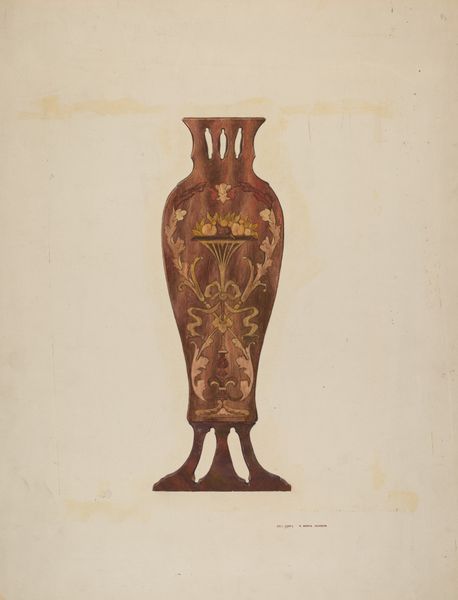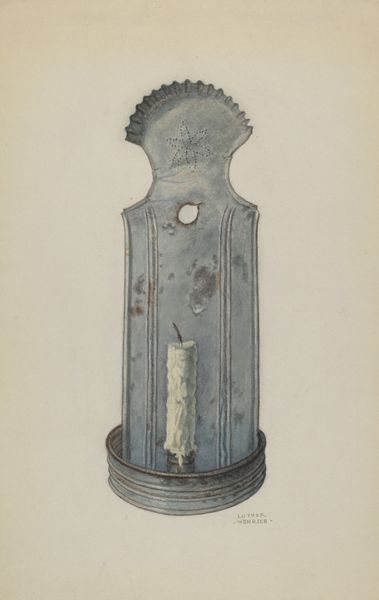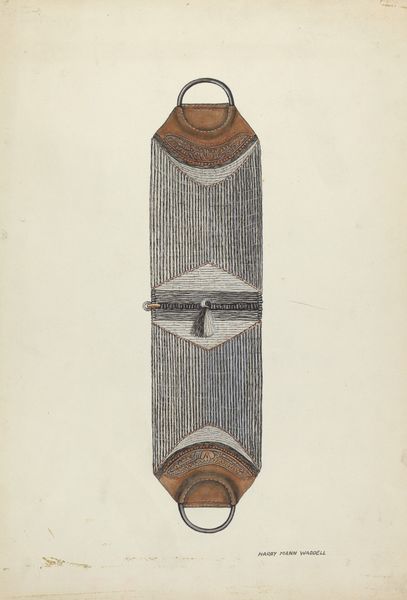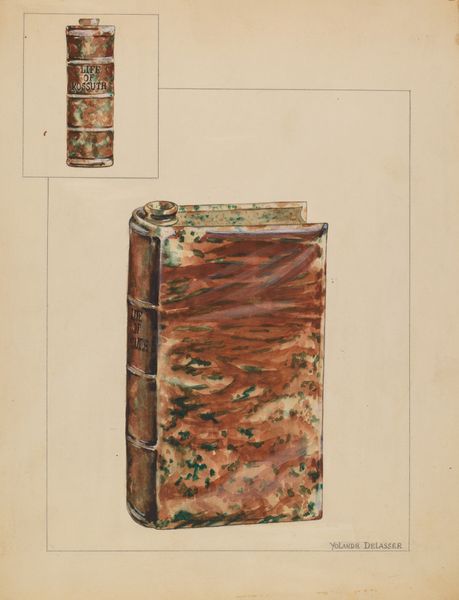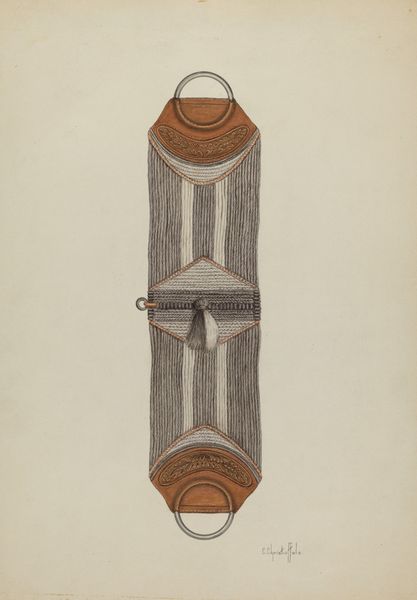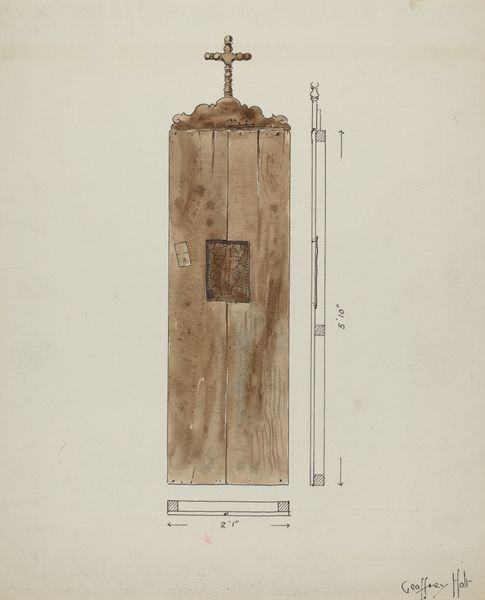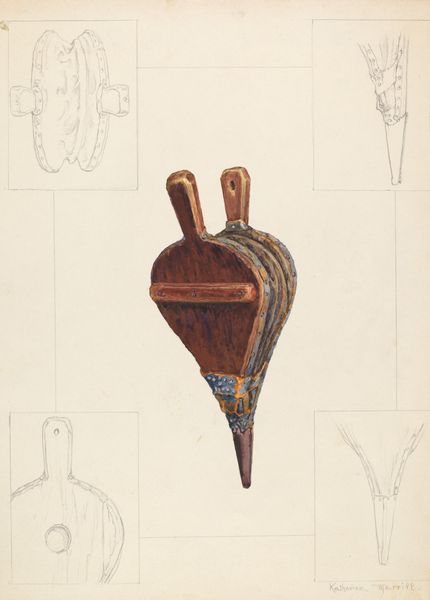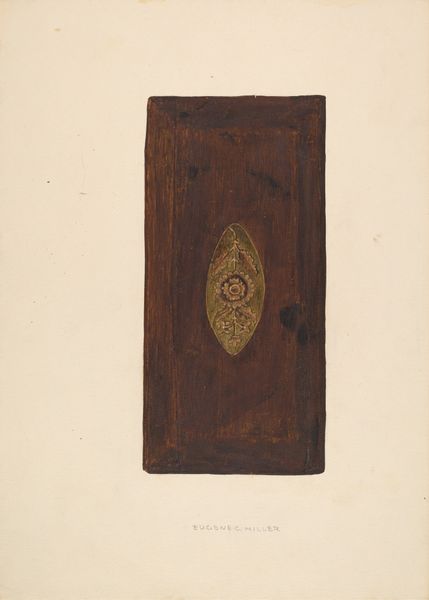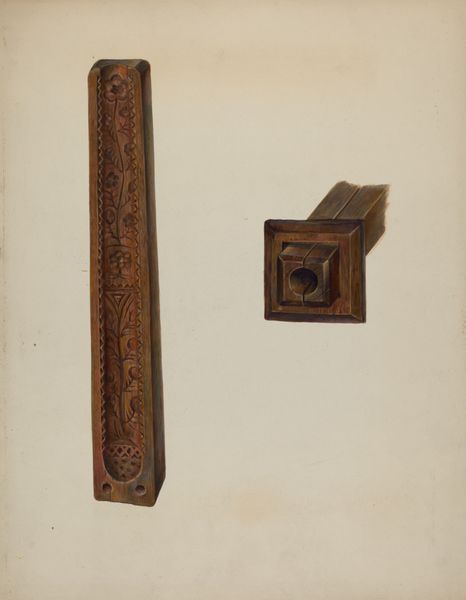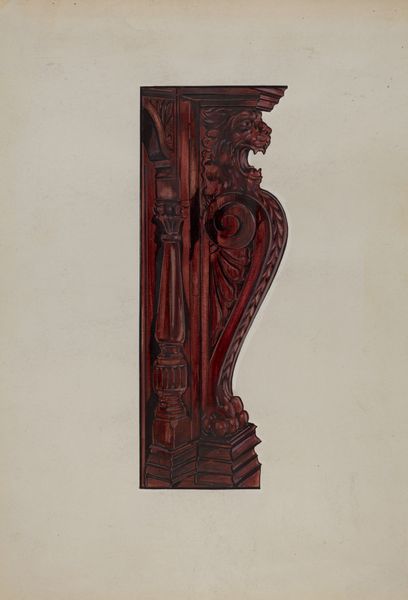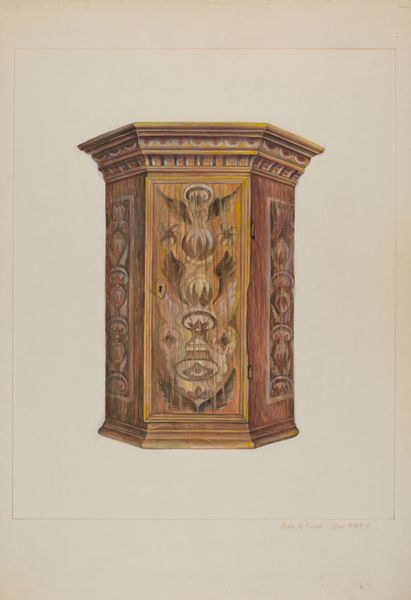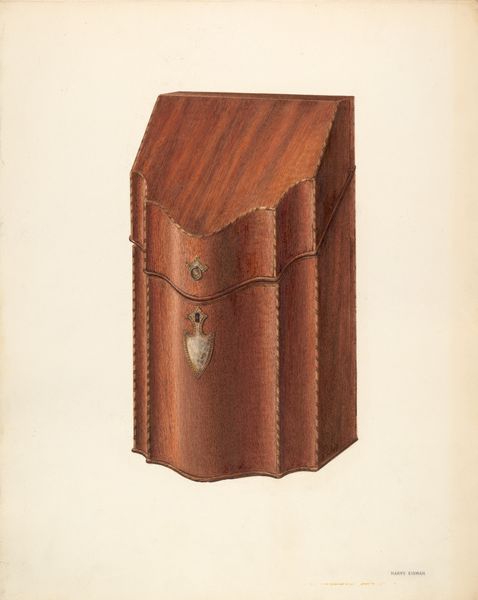
drawing, watercolor
#
drawing
#
watercolor
#
coloured pencil
#
academic-art
#
watercolor
#
realism
Dimensions: overall: 28.2 x 22.5 cm (11 1/8 x 8 7/8 in.) Original IAD Object: 10 1/4" long; 2" wide; 34" deep
Copyright: National Gallery of Art: CC0 1.0
Editor: So this is "Razor Box and Razor" by Alfred Walbeck, around 1937, made with watercolor and drawing. It feels very detailed and precise. What really stands out to me is how meticulously the textures of the box are rendered. What are your thoughts when you see this work? Curator: I immediately consider the socio-economic context of 1937. Think about mass production versus individual craftsmanship. Walbeck’s careful rendering of this everyday object elevates it, almost resisting the throwaway culture that was emerging. It’s a utilitarian item transformed into an object worthy of artistic attention. What do you make of the sketched razor to the side? Editor: Good question! I initially thought it was a preliminary sketch, but I wonder if it functions as some kind of blueprint instead? Curator: Precisely. It makes me think about the labor involved, not just in the art but in the production of the razor itself and the case to hold it. Are we meant to consider the factory worker alongside the artist? Does the work's medium, watercolor on paper, make you think of any other uses for rendering everyday items like this one? Editor: Maybe like designs for manufactured products? It’s interesting to think about how the same artistic techniques can be applied in service of art, industry, or maybe even advertising? Curator: Exactly. This drawing, seemingly simple, opens up questions about the artistic process, industrial production, and the very value we assign to different types of labor and art making. The object transcends its intended use, sparking a conversation about its production and place within consumer culture. Editor: I’ve never thought about still life in terms of labor before! This really makes you question how things are made, and by whom. Curator: And that's the power of considering art through the lens of material and production. We move beyond aesthetics to consider the hands, materials, and forces that shape our world.
Comments
No comments
Be the first to comment and join the conversation on the ultimate creative platform.
